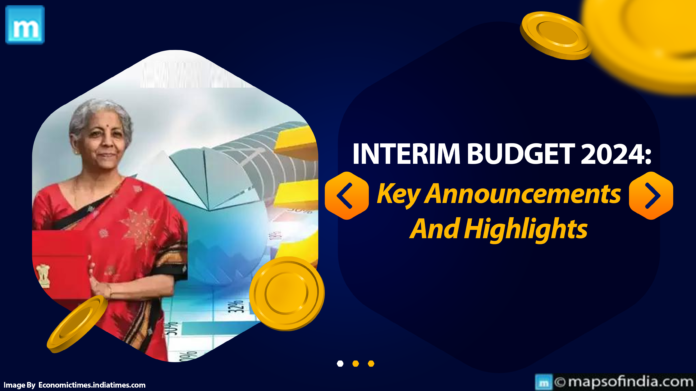As the Lok Sabha elections approach, Union Finance Minister Nirmala Sitharaman presented the Interim Budget 2024 on February 1st, 2024—her sixth straight budget presentation. Interestingly, this was Sitharaman’s shortest address to date. She gave a speech to the nation in which she projected extraordinary growth and laid out her vision for the next five years. The declaration of a significant capital spending of Rs 11.1 lakh crore for the next fiscal year, representing an 11% increase from the current fiscal year, was one of the major highlights. In this article, we delve into the crucial announcements and highlights of the Interim Budget. Before that, let’s clarify what an Interim Budget is and how it differs from the Union Budget.
What is the difference between Interim Budget and Union Budget?
While the Union and Interim Budget are part of India’s annual financial planning process, their functions are distinct. The government’s detailed financial statement outlining its revenue and expenses for the next fiscal year is called the Union Budget. It has thorough allocations for various sectors. On the other hand, an interim budget is a short-term budget that the departing government presents during a transitional phase or in a general election year. It serves as a temporary measure to cover the government’s expenses until an entirely new government is established and qualified to submit a comprehensive Union Budget.
Key Highlights and Announcements
-
Direct and Indirect Tax
Finance Minister Nirmala Sitharaman suggests maintaining the status quo on direct and indirect taxes, including import duties, with no proposed changes in the existing tax rates from the previous year. FM proposes tax benefits for pension funds and reduces the processing time of tax returns from 93 days in FY14 to 10 days.
-
Tourism
Proposals have been made for interest-free loans to states to stimulate tourism, and funds will be set aside for tourism growth in Lakshadweep.
-
Air Connectivity
As part of the Udan Scheme, plans are to inaugurate 517 new routes, expanding connectivity and accessibility across the designated regions.
-
Rail
To improve logistical efficiency and cut costs, a sum of Rs 2.55 lakh crore has been set aside, with a particular emphasis on three crucial economic railway corridors as part of the PM Gati Shakti project. The budget significantly emphasises urban transformation using programs like Metro Rail and NaMo Bharat.
-
Agriculture
The budget seeks to increase funding for post-harvest operations by enlisting the help of the public and private sectors, with a particular emphasis on strengthening the position of dairy producers. The government also intends to introduce Blue Economy 2.0, a strategic plan to advance aquaculture.
-
Healthcare
All Aasha and Aanganwadi workers would have access to the healthcare amenities Ayushman Bharat offers. A program to vaccinate girls between the ages of 9 and 14 against cervical cancer is also in place. With a 13.8% increase from the previous year, the health sector is expected to collect Rs 90,170 crore.
-
Education
The revised estimate of Rs 1.1 lakh crore for the previous fiscal year 2023/24 has been increased to Rs 1.25 lakh crore for the education budget in the fiscal year 2024/25, representing a 14.5% increase.
-
Housing
A new housing initiative is in place for the middle class, and plans are being made to construct two crore houses under PM Aavas Yojana.
-
Renewable energy
Financial aid will be provided for acquiring biomass aggregation machinery, and a goal is set to empower one crore households to receive up to 300 units of complimentary electricity per month.





